Thanks to the nutrient-rich coastal waters, diving and snorkeling in Costa Rica can be a magical experience. The clear sea offers visibility for scuba diving between 30 to 100 feet, guaranteeing you’ll spot all kinds of marine life. Divers may even find themselves distracted from the underwater beauty by ‘big animal’ sightings — including whale sharks, manta rays, dolphins, sea turtles, and the occasional humpback whale. If scuba diving isn’t your cup of tea, snorkeling is a great way to leisurely explore the underwater scenery. Costa Rica has a variety of snorkeling options for beginners and experts. Many diving and snorkeling tours are available along Coast Rica’s coasts, but the following are what we believe to be the best destinations for diving and snorkeling in all of Costa Rica.
Gandoca Manzanillo Wildlife Refuge | Southern Caribbean Coast

The Gandoca Manzanillo Wildlife Refuge is considered by many to be the best spot for snorkeling and diving on the Caribbean Coast of Costa Rica. The coral reef, little bays, inlets, and islands are the perfect recipe for attracting marine life. Sea turtles (nesting from March to July), manatees, crocodiles, and dolphins are just some of the animals that call Gandoca Manzanillo home.
Cahuita National Park | Southern Caribbean Coast
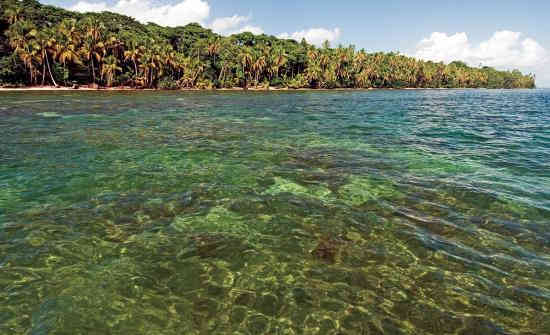
Cahuita National Park on the Southern Caribbean Coast has one of the largest living coral reefs (with over 35 species of coral) off the coast of Costa Rica. The coastal park backs up to a 5.6-mile trail along the shoreline. Make the trek about 2.35 miles where you’ll reach Punta Cahuita, one of the best snorkeling spots in the park. It can be rainy on this side of the country. If you have any flexibility, plan a visit in the drier months of September and October, specifically during the colorful reggae-style festival of Carnival.
Caño Island Biological Reserve | Osa Peninsula
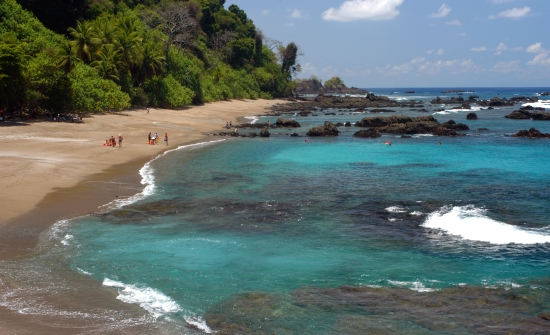
Exploring Cano Island from Aguila de Osa Inn
There are a number of beautiful locations around the Osa Peninsula at which scuba divers—both novices and seasoned veterans—go beneath the surface to experience an entirely foreign world. The Pacific Ocean’s clear waters offer visibility of anywhere from 30 to 100 ft year-round, ensuring visitors to Costa Rica’s underwater world always get an unobstructed view of the vast variety of marine life they’re swimming with. However, no other place has the amount of unique scuba diving spots that the Caño Island Biological Reserve boasts. Be on the lookout for white-tip and bull sharks. Spotted dolphins are always curious and may play in the boats wake. You’ll see more fish than you can handle – visitors often encounter schools numbering in the hundreds. Because of Cano Island’s status as a biological reserve, there are five designated diving locations and only ten divers can be in the water at a time. Below are the five designated diving locations within the reserve:
El Bajo del Diablo
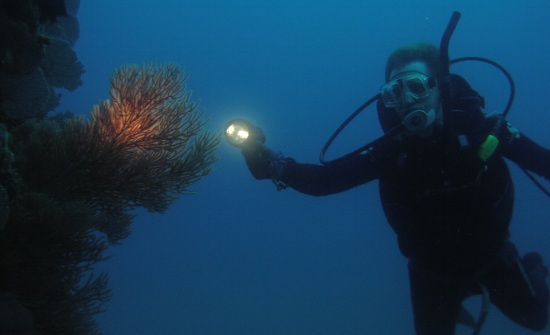
Depth: 20 to 80 feet
The premier diving spot surrounding Caño Island, El Bajo del Diablo (or “Devil’s Rock”) lies a little over a mile off the island’s shore where huge rock pinnacles reach from the ocean floor to create an incredible underwater landscape of peaks and valleys. Giant manta rays sporting wingspans of up to 20 feet have been spotted here, as well as the jumping Mobula ray. A number of shark species can be seen here as well, including bull sharks, nurse sharks, and if you’re lucky, the elusive whale shark. More reliably, a host of smaller, tropical fish can be observed around the jutting rocks.
Cueva del Tiburon
Depth: 50 feet
This is a dive accessible to scuba divers of all experience levels and, depending on your luck, can end up being one of the most incredible dives you will ever endeavor. The “Shark Cave” is home to several white tip sharks, and divers can usually see around 6 or 7 of these sleeping from the mouth of the cave. Because of park regulations, divers do not enter the cave. Nevertheless, just watching the dormant sharks lurking within the rock is spectacular to behold. Besides the actual cave, this dive traverses many underwater rock formations and hard coral where you will see many tropical fish—pufferfish, boxfish, goatfish, sea turtles, and even some large rays from time to time. If the sun is hitting the coral just right, divers can also experience beautifully colorful coral reflections that are infinitely memorable.
The Coral Gardens
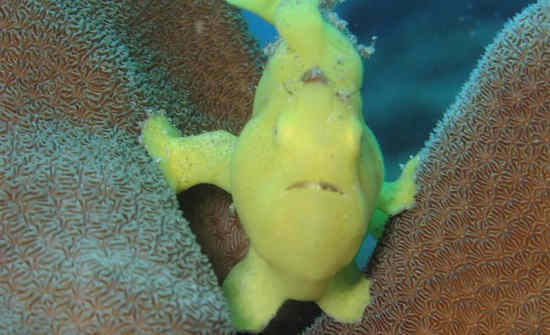
Depth: 15 to 40 feet
This is definitely the number one spot for enjoying spectacular coral reefs, and the different species that call this habitat their home. This particular dive is a shallow one with a maximum depth of 40 ft. At this depth, scuba divers can swim with the damselfish, the parrotfish, the butterflyfish, the porcupine fish, the goby, and perhaps even an octopus! The range of colors these animals display is absolutely stunning, like an underwater rainbow.
Paraíso
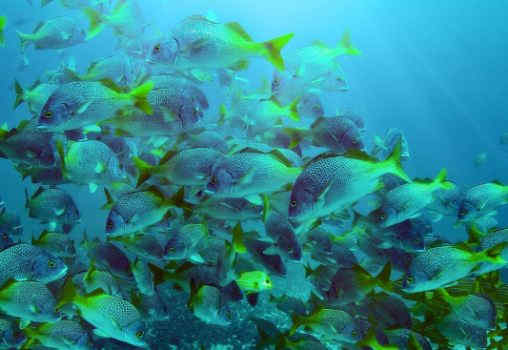
Depth: 65 to 70 feet
Spanish for “Paradise,” this diving location is aptly named—if you were a fish, you’d want to live here too! The volcanic lava formation is home to thousands and thousands of blue and gold snappers. These fish congregate in schools, and swimming through one of these groups is like diving through a living tunnel. There are also large groups of barracuda that circle the schools of horse-eye jacks, waiting for the right time to strike. The drama is real, and you get a front seat to watch it unfold! Don’t miss Paraiso on your next visit to Caño Island.
Marenco Rock
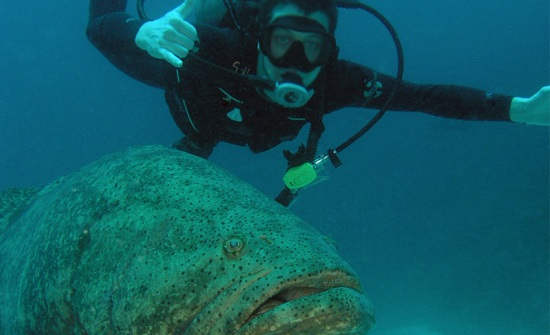
Depth: 50 to 60 feet
This area is covered in swaying black corals, where grunts and snappers swim and lobsters crawl back and forth looking for their next meal. The area is also home to large amounts of plankton, attracting schools of several species of larger fish to feed at Marenco Rock.
Catalina Islands for Diving or Snorkeling | Guanacaste

In the Pacific Ocean beyond Flamingo Bay, Guanacaste, the Catalina Islands draw divers and snorkelers alike. This protruding volcanic rock formation is home to a variety of marine life like sea turtles, octopus, eagle rays, moray eels, eagle rays, seahorses, white tip reef sharks, and more. Half-day diving and snorkeling tours to Catalina Islands are available from the Guanacaste region.
Gulf of Papagayo for Snorkeling | Guanacaste
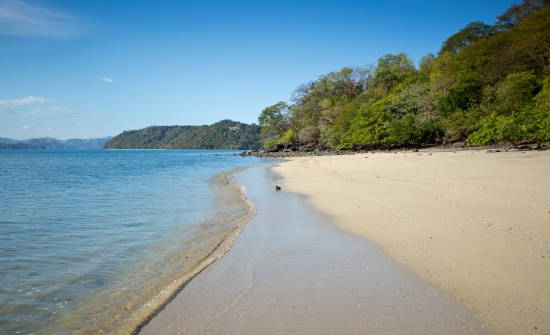
Culebra Bay (within the Gulf of Papagayo) snorkeling from the Andaz Resort
In the northwest province of Guanacaste, off the Papagayo Peninsula, the Gulf of Papagayo is a wonderful snorkeling destination for its calm and protected inlets and bays. Despite being an up-and-coming resort area, the Papagayo Peninsula retains its natural integrity with its lush tropical landscape and over 400 species of wildlife.
Gulfo Dulce for Snorkeling | Osa Peninsula
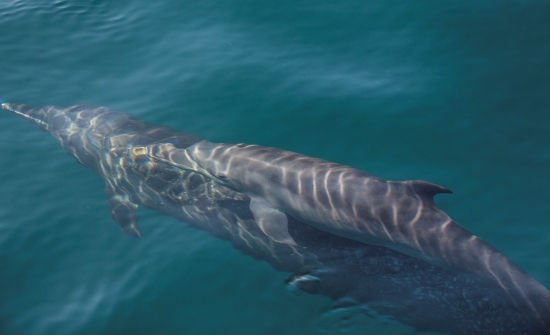
The Gulfo Dulce on the Osa Peninsula has both unique marine and terrestrial ecosystems making it the perfect destination for those who love wildlife on both land and sea. Its also home to a significant population of spinner dolphins, so you might catch an impromptu circus performance during your snorkeling adventure! The spinner dolphins can gather in super-pods and they’re a delight to watch from the boat or from up close below the surface. The reefs off the coast contain more creatures than can be seen in any single outing, so don’t be surprised if you’re soon itching to go back.
Costa Rica Diving & Snorkeling Tours
As your Costa Rica Experts, we represent full-service, PADI-certified dive shops to ensure a safe and amazing scuba diving and snorkeling experience. Most snorkeling tours combine sailing into the excursion experience with the option of booking in the morning or at sunset. Drinks and sometimes snacks or a meal may be served depending on the tour. Talk to a Costa Rica Expert about what options there are for your snorkeling or diving destination of choice. The following are some additional diving and snorkeling experiences to choose from.
- Snorkeling or Scuba Diving Tour of Cano Island Biological Reserve
- Golfo Dulce Dolphin and Snorkeling Tour
- Guanacaste Morning or Sunset Cruise and Snorkeling Tour
- Guanacaste Kayaking and Snorkeling Tour








